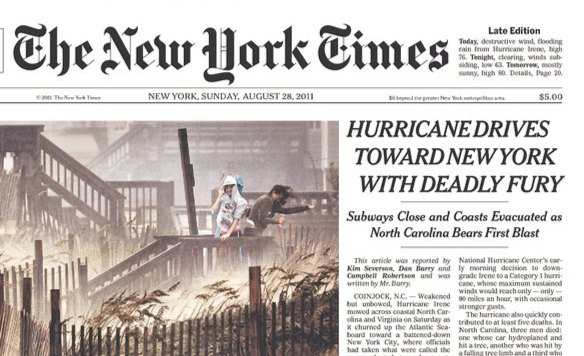The New York Times has been dealing with computers in one way or another since the 1970s, but the tool went from aid to threat once the Internet took hold in the middle of the 1990s. In under a decade, the old way of doing business became passé and clinging to it a danger. The real challenge is for the former newsprint company to continue reinventing itself in ways that won’t degrade the journalism. It’s not as easy task, and it’s especially difficult for reporters to deal with a sky perpetually falling while trying to do an often busy and bruising job. It’s no wonder new Public Editor Elizabeth Spayd told Poynter she’ll “pay attention to the newspaper’s business efforts as well” as the content. There’s no separating them anymore.
In a Politico piece, the excellent Joe Pompeo examines the company’s maneuverings in this fraught media age. An excerpt:
On the business side, the Times’ decision in 2011 to start charging people to read an unlimited number of articles on nytimes.com proved to be a life-saving calculation, bringing the Times more than a million digital-only subscribers to date and nearly $200 million in circulation revenue last year alone.
But the water is rising again and those numbers must grow. Soon, the Times is likely to hit a ceiling on how many people in its existing audience it can convert into paying subscribers. If it can’t get more money out of the same customers, it must find new ones.
That’s what’s behind a plan implemented earlier this year that puts $50 million behind the prospect of getting many new readers to open their wallets in foreign markets, where the Times is creating digital editions tailored to non-Americans.
A unit creating content that might just pass for journalism were it not paid for by advertisers also is making dents in the Times’ march toward $800 million in digital revenues by 2020, an ambitious goal considering digital revenues were just south of $400 million in 2015.
The problem is that while print advertising is still a big slice of company revenues ($441.6 million out of $1.58 billion in 2015), it’s been plummeting year after year as marketers become hotter on digital, and tech giants like Facebook and Google dominate online ad growth.•



